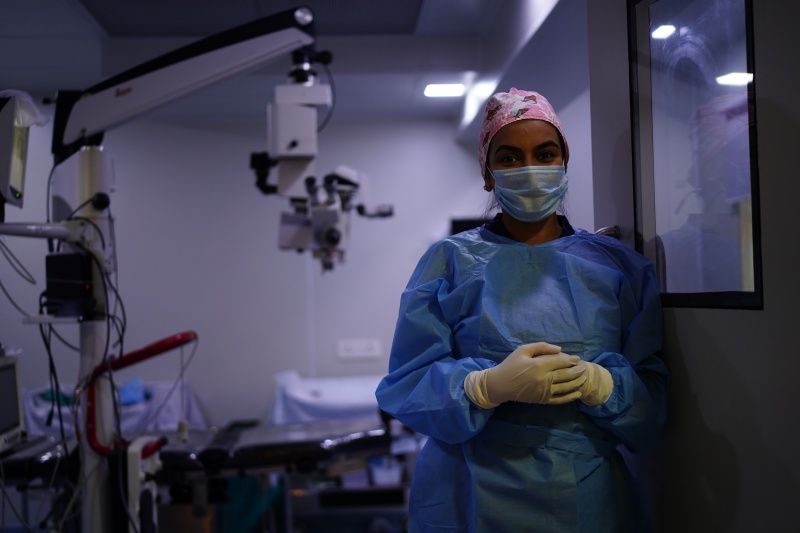‘I cannot read anything!’
40+ Eye Woes
Have you recently crossed the big 4-0h (No) and suddenly you can’t read small fonts on your phone? Or you cannot see your face when you do your makeup?
No, you are not going blind, nor do you have a brain tumor.
Welcome to the ’40s, you are developing something called Presbyopia.
What is presbyopia?
It is an age-related change in your eye, changing your ability to focus. It starts at about 40 and continues to get worse till your mid-60s. It is an annoying part of aging, and most patients are unaware that this was coming up.
Don’t worry, you are not going to need those school headmistress half-moon glasses for the rest of your life.
You will need a pair of glasses though and there are many newer solutions or aids to help you see near objects and read.
The good news is that it is 2022 and there are a ton of options out there to help you look glam and not look like Dumbledore.
A few images below show how a loss of accommodation changes the focus and how a plus number lens also known as a spherical lens can help put everything back into focus.
Symptoms of presbyopia:
Needing to move your hand away from your eyes while holding a book or mobile device to read.
Headache, dizziness while trying to focus near objects.
Solutions to tackle presbyopia:
- Spectacles/glasses:
Readers: The easiest solution or rather aid to presbyopia is to use reading glasses.
Only readers are those glasses with a Plus number only that create a magnifying effect for near objects, and you put on these only to read and take them off when you don’t need them.
Bifocals: You can also opt for bifocal glasses where the top of the spectacle lens has plain or distance correction and the bottom of the lens has the near work number, but the line across the middle of the lens is a bit outdated looking and this is not my preferred option.
Progressive glasses are a great option, especially for those who need to read, use their phone, sit on a computer as well as look up and focus far objects all at the same time. The lenses have near, intermediate, and distant corrections on a single lens, they are full frame, however, they are a bit pricey and do take some time to adjust to in the beginning for some.
- Contact lenses
Contact lenses have always been a great, non-invasive, and cosmetically effective way to combat glasses for most refractive errors (spectacle numbers). Monovision has been routinely used with contact lenses where one eye is corrected for distance and one eye for near vision.
With newer multifocal contact lenses in the market, presbyopia correction has become a breeze. However, it is important to get fitted by a certified contact lens expert. Focus on high-quality lenses and maintaining lens hygiene. Learning how to wear contact lenses for many can be a challenge but if this works for you, you are going to be happy as a clam.
- Laser vision correction
Presbyopic laser vision correction technology has evolved through the years giving better results. There are many pros and cons to Laser Presbyopic correction, but it is important to have every treatment personalized, so this is not a one size fits all option.
- Refractive lens exchange
This is my personal favorite option for those in their mid 40’s who have an otherwise healthy eye, a stable retina. Refractive lens exchange works beautifully for most, even though the surgery is intraocular, this means that you will never develop cataracts later as we are exchanging the clear crystalline lens with an advanced intraocular implantable lens that works on near vision as well.
This technique is also not ideal for everyone so discuss with your board-certified eye surgeon and see if this is for you.
- Eye drops (coming soon)
The most exciting eye drop coming into the market this year is a low-dose Pilocarpine eye drop that will help work on accommodation and eliminate the need for readers. Honestly, I cannot wait for this to hit the market and am hoping that it will work as amazingly as the company claims.
Please note that there are certain conditions of the eye that are often seen post 40 years of age, so in addition to just getting readers, make sure you have a comprehensive eye check with pupil dilation, to rule out cataracts, glaucoma and other conditions that may worsen with age.
The American Academy of Ophthalmology recommends that adults have a complete eye exam every:
- Five to 10 years under age 40
- Two to four years between ages 40 and 54
- One to three years between ages 55 and 64
- One to two years beginning at age 65



